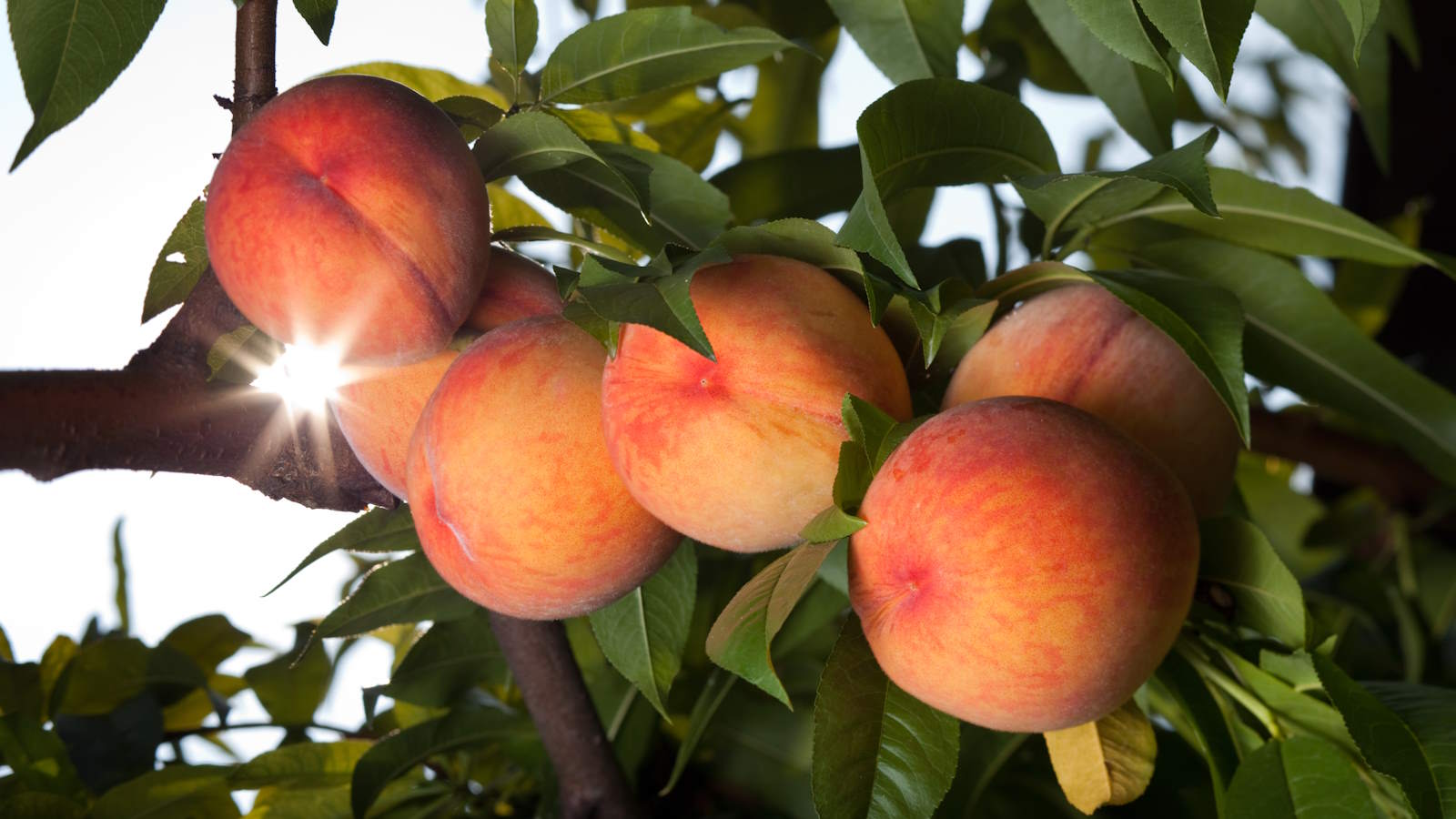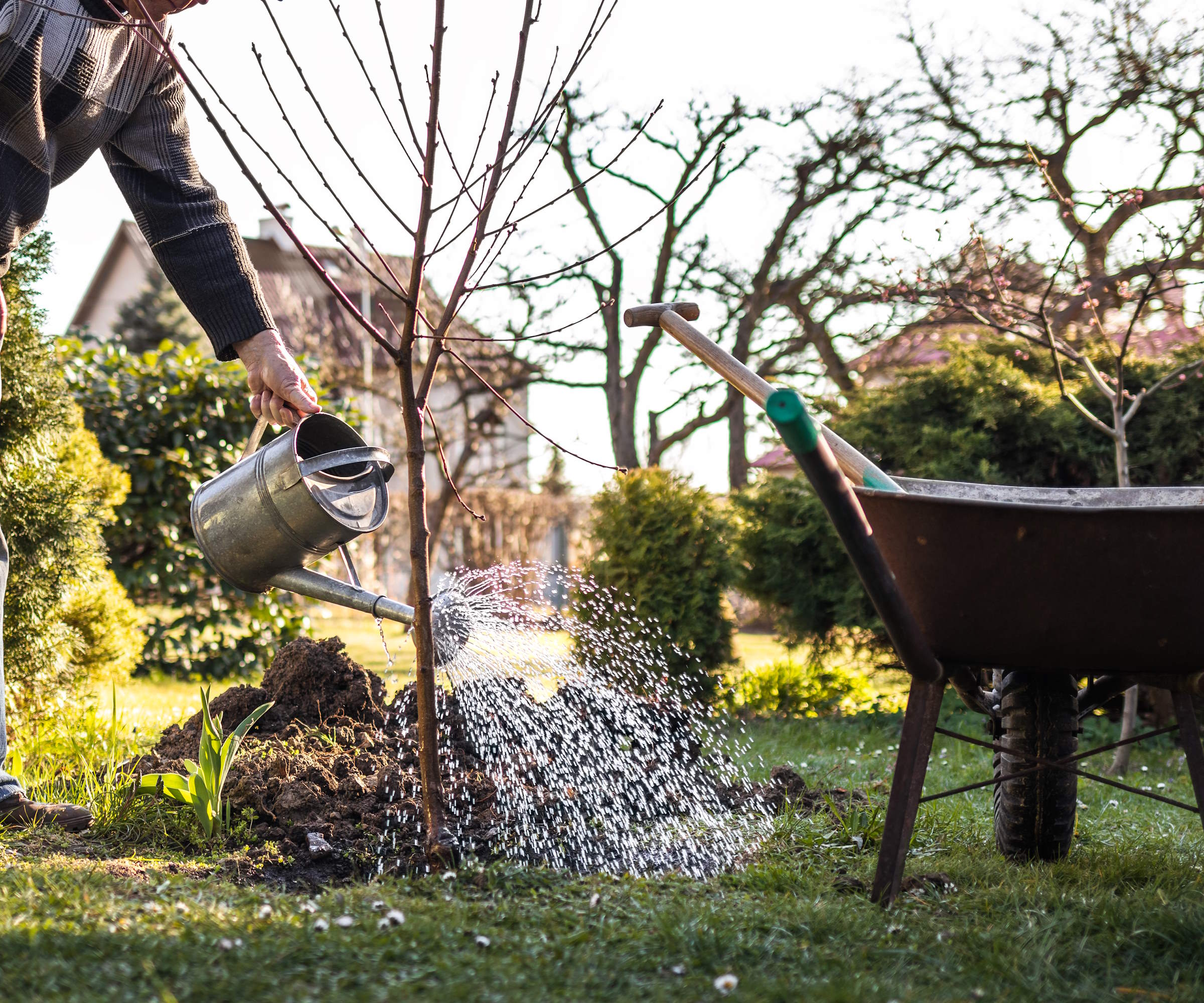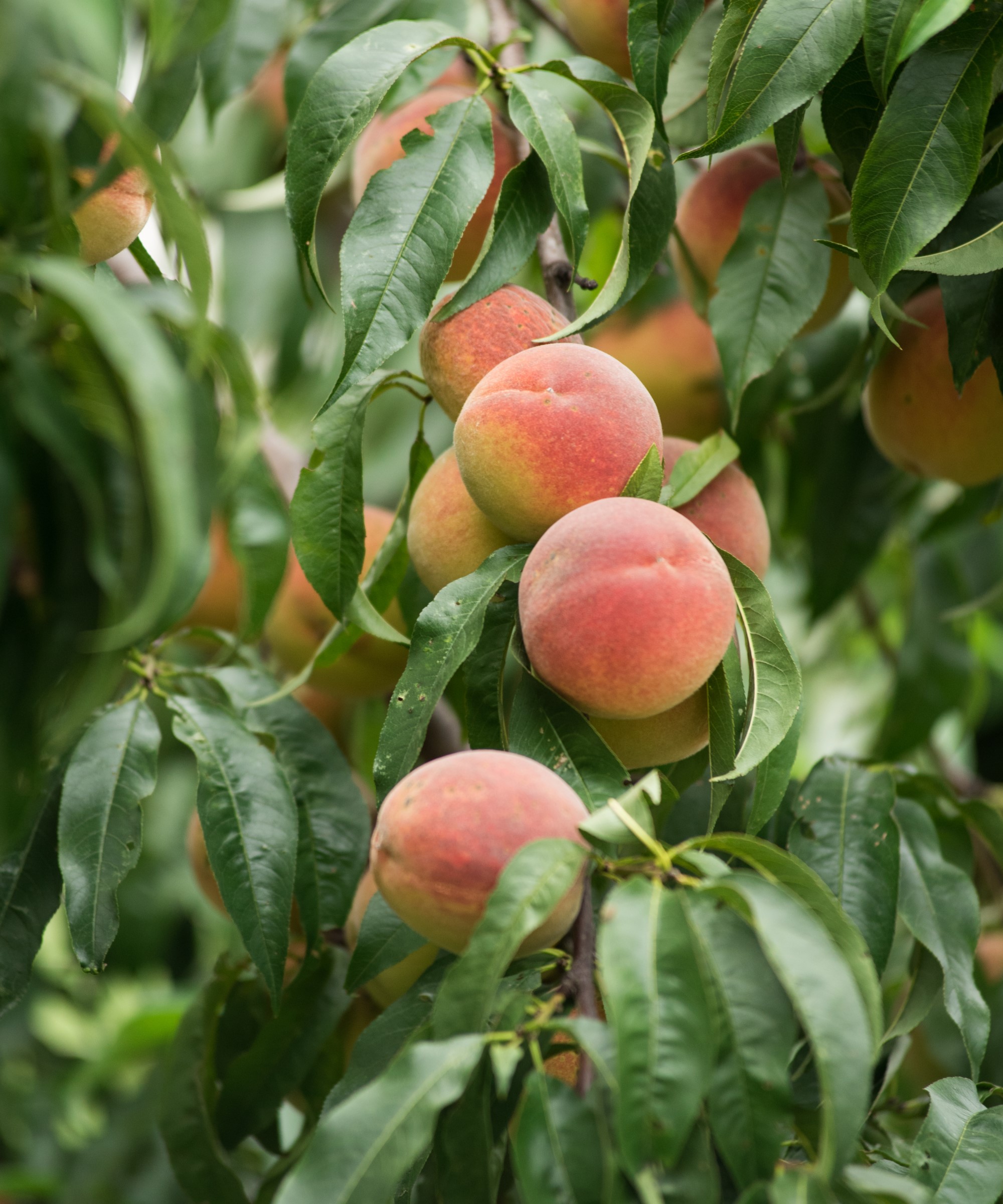
Growing peach trees is a luxury that allows you to harvest delicious and juicy peaches at home, however, the trees can be surprisingly simple to grow. They are trees that actively want a warm and sunny spot to grow in and they can be grown in the ground or in large planters.
If you want to grow a peach tree at home, the trees you see for sale will be grafted onto strong and reliable rootstocks that will influence how it grows. It means all you need to do is pick a type of peach tree with the characteristics that suit you and take it home to plant.
Planting a peach tree at the right time, and also planting it correctly, is important to ensure the tree gets off to a good start to life in its new home. If all is done properly, the tree will establish a strong root system quickly and thrive, providing fruits for many years to come.

Options available for buying a peach tree
Fruit trees, including peach trees, can either be purchased as bare-root or container-grown specimens. Which type you choose to add a stunning peach tree to your backyard ideas will depend on your budget and also the time of year. Bare-root peach trees will be available during the plant’s dormancy period from late fall to early spring, while container-grown peach trees are available year-round.
A high-yielding dwarf peach tree that will grow to around 10-15 ft in height. This container-grown fruit tree will give a harvest of delicious peaches in the very first season after planting
When to plant a peach tree

When you plant a fruit tree can depend on the type of tree you purchased - whether it was bare-root or container-grown - but there are ideal and non-ideal windows for planting both types.
The ideal time to plant a peach tree is during the plant’s dormancy period. Steve Cummins from fruit tree specialists Cummins Nursery in Ithica, NY, says that many fruit trees, including peach trees, do transplant better when they are dormant. He says: ‘When a tree is dormant there is less transplant shock.’
It makes late winter or early spring a perfect time to plant a peach tree. The window can run from late December through to early March, depending on your climate and US hardiness zone, and is when bare-root peach trees are readily available.
‘Planting during dormancy allows the tree to establish its root system before the onset of the growing season,’ says Maureen Wright, plant expert at Fast Growing Trees. ‘This helps the tree focus all of its energy on root development without the demand of supporting new foliage.’
Container-grown peach trees can be planted year-round in the garden, however, late winter or early spring would still be the ideal time. There are potential issues to overcome if you plant peach trees in summer or fall.
Planting in summer means you will need to take great care to check and water plants regularly to help them get established. Peach trees can be planted in fall, as the soil is warm and moist at that time of year, however, Steve Cummins warns about leaving it too late in the season. ‘Pome fruit such as apples, can be planted in the fall, but peaches are more sensitive to winter damage,’ he says.
Discover different varieties of bare-root peach trees available at Burpee
How to plant a peach tree

Soak a peach tree before planting it. Whether it is a container-grown or bare-root tree, soaking the plants for around half an hour in water will help reduce the risk of transplant shock. It is also important to prepare the planting site ahead of planting fruit trees by clearing all weeds and adding organic matter, such as compost or well-rotted manure, to increase the fertility of the site. Forking over the planting site ahead of time means the soil should be loose and easier for the tree’s roots to penetrate.
You want to dig a wide and deep hole, that is the same depth as the plant’s rootball and twice the width. Katie Brines from Stark Bros Nurseries and Orchards advises to ‘spread out the roots’ ahead of planting and then ‘backfill the soil ensuring the graft union is above ground’.
To get the graft union at the right height, plant container-grown peach trees at the same depth they were in the pot. Bare-root plants should have a soil mark on the stem where they were planted, so aim to transplant them at that same level and the graft should sit at the correct point above ground level.
A peach tree wants generous watering after planting and for the moisture levels to remain consistent as the tree establishes itself in its new home. The soil wants to be regularly checked for when to water, and the ground should be consistently moist but not waterlogged. When it comes to how to water, it is better to water deeply and less regularly than shallow and often. A deeper water will get the moisture down into the soil and encourage the tree to develop a strong root system.
Maureen Wright also advises mulching around the tree after planting. She says: ‘Apply a layer of organic mulch around the base of the tree to conserve moisture, regulate soil temperature, and help stifle weed production.’
Mulching with a few inches of organic matter, such as compost or well-rotted manure, will benefit the tree as it establishes. It is not recommended to add any fertilizer into the hole when planting peach trees, as the roots may not delve out further into the soil to search for nutrients if they have all they need in the planting hole itself. In terms of when to fertilize fruit trees, Maureen Wright does recommend ‘wait until the tree has established before applying fertilizer’ and best practice is ‘to wait a full growing season before doing so’.
Fruit trees planted in open or windy areas will benefit from being staked to support them. This is best done just after planting with a short stake angled at 45 degrees in the direction of the prevailing wind. Secure the stake loosely to the tree to allow for the natural movement of the tree.
A strong and durable heavy-gauge steel digging spade that is ideal for making planting holes for trees and shrubs
FAQs
Can you plant a peach tree in winter?
A peach tree can be planted in late winter after the risk of frost has passed. It is not recommended, however, to plant peach trees during freezing conditions that would be found in the middle of winter.
Katie Brines from Stark Bros Nurseries and Orchards says that temperatures need to be ‘above freezing’ to plant and it needs to be ‘when extreme temperatures such as blizzards, hail, and torrential rain are not in the forecast’. If you do have a potted peach tree that needs planting, she recommends that ‘you can always treat them like a houseplant’ until you are ready to plant after the worst of winter has passed.
Peach trees are very versatile, they are one of the best fruit trees for small gardens and also one of the best fruit trees to grow in pots. Wherever you want to plant a peach tree, remembering the expert advice mentioned here will help ensure your trees are healthy and thriving.







